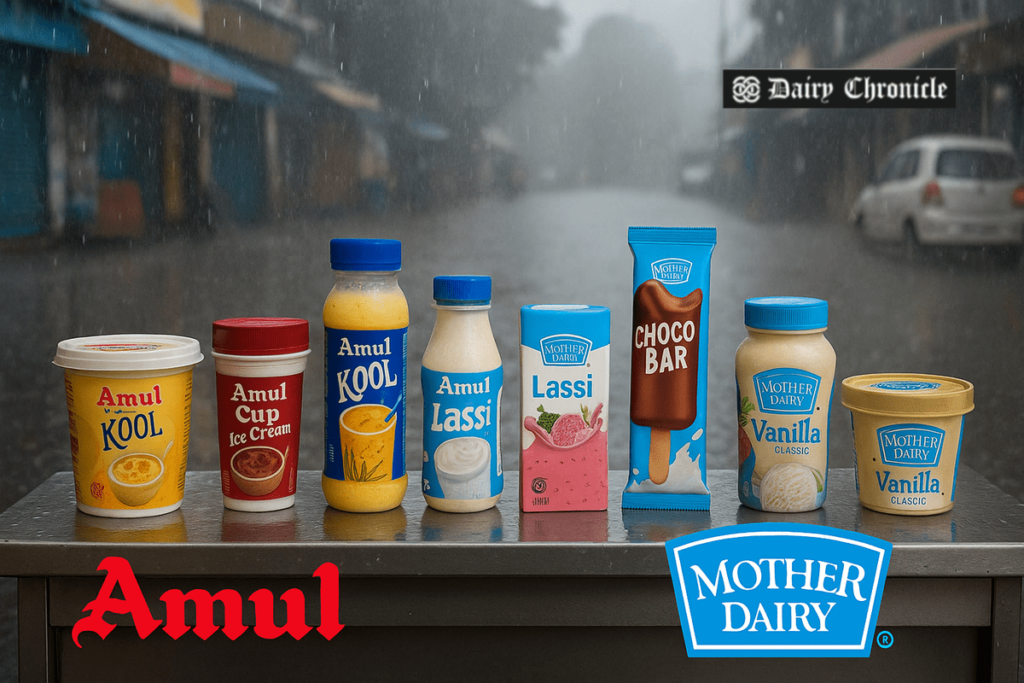India’s dairy and FMCG sectors, including leading players like Amul and Mother Dairy, are facing a significant decline in sales of summer dairy products due to unseasonal rains in states like Delhi, Punjab, and Uttar Pradesh. This unexpected weather pattern has disrupted consumer behavior and inventory planning, forcing companies to adapt swiftly.
India’s leading dairy companies, including Gujarat-based cooperative Amul and Delhi-based Mother Dairy—both known for their extensive range of milk and value-added dairy products—are experiencing a notable slump in sales of summer-oriented items due to unseasonal rains in the northern states.
According to the Retailers Association of India (RAI), sales of summer-centric dairy products like ice creams, flavored milk, and lassi have dropped by 15% over the past week. The weather has unexpectedly turned cooler, affecting key consumption markets in Delhi-NCR, Punjab, and Uttar Pradesh.
Retailers and distributors across these regions report reduced footfalls and lowered interest in chilled dairy products. “This is usually our peak season, but the rain has changed everything. Stock is piling up,” said a distributor in Noida, Uttar Pradesh.
Amul, Mother Dairy, and several regional brands had scaled up inventory and launched summer campaigns, many themed around the IPL season, in anticipation of strong demand. However, the unusual weather has disrupted those plans, leaving unsold stock in warehouses and retail shelves.
“Weather-sensitive inventory management has become critical,” said an industry executive. “Companies are now using real-time sales data to recalibrate their distribution.”
While urban markets have taken a hit, rural demand remains more stable, slightly cushioning the impact. Experts suggest that dairy firms and cooperatives will need to strengthen tech-driven demand forecasting and build agile supply chains to navigate such seasonal uncertainties.
As the weather remains unpredictable, India’s dairy sector must pivot quickly to reduce losses and prepare for future climate-related demand fluctuations.



